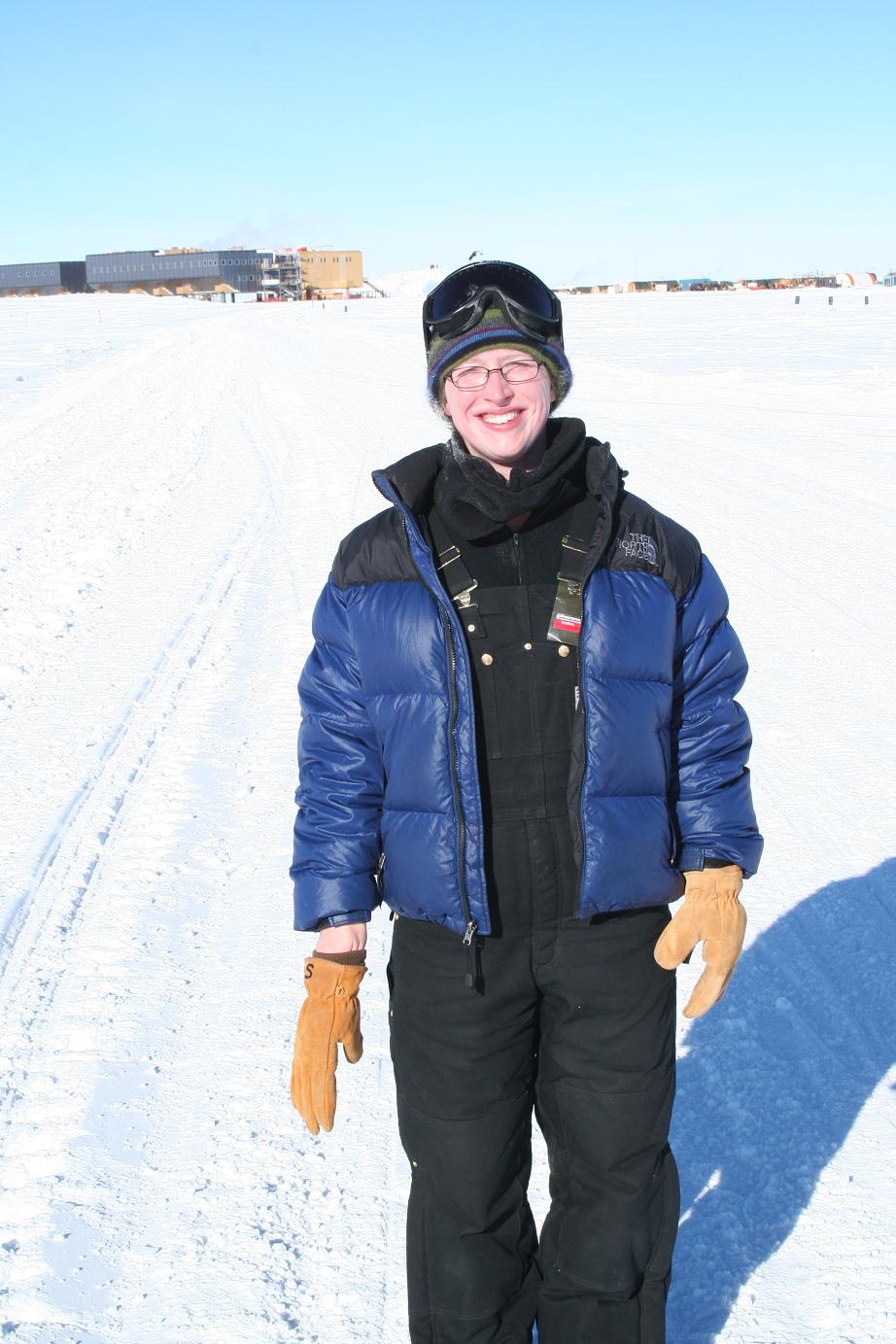Unbreakable Beaker: A Scientist’s Life at South Pole Station
The entire South Pole Station exists solely to support science that can only be done in this unique location. The support is phenomenal, from the logistics and infrastructure support for building major projects to the genuinely delicious meals that sustain us all. The vast majority of the people who come to the pole work to keep this support going, maintaining demanding 60 hour work weeks on shifts that operate around the clock. Many of the crews spend their time doing vigorous physical labor in temperatures below -40F. The scientists are a small minority, who come to the pole typically for short periods of time, and often never fully integrate into the daily routine of the greater station community. While the whole South Pole culture is welcoming and accomodating to diverse (and eccentric) personalities, the scientists still stand out. There is a name for us – “beakers”. It can be used affectionately, but is also appropriately applied when you see someone like myself wandering through the galley in a daze, having a visibly hard time avoiding collisions with the people around me. Everyone at the station works hard, but there is something about the relentless and unpredictable schedules of doing scientific work in the field that creates absentminded zombies from otherwise normal human beings.
I’ve been in that state quite a bit the last three weeks. The calibration measurements that I came here to do needed to be completed on a tight schedule, and were governed by the tempermental moods of the telescope receiver. To perform the measurements, we had to repeatedly cool the receiver down to a quarter of a degree above absolute zero, in order to operate our detectors. Graduate student Martin Lueker from Berkeley was responsible for tending the sensitive refrigeration technology that does this, and he had no easy time of it. We have been operating in less than ideal conditions, keeping the receiver down in our control room tilted at an angle that makes cooling more difficult. The process of cooling could take as many as 17 hours, at which point Martin and I would have to rush out and try to quickly perform measurements in the few hours that things stayed cold, no matter what time of day or night. At the worst, we were getting time windows of only two or three hours to perform measurements, and these could come at any time of day or night. The task of taking measurements was under intense time pressure and required extreme focus, since even a few minutes could mean the difference between getting the data we needed and having to wait until the next time we were cold.
In the last two weeks, I have worked almost continuously, and certainly every waking moment. When we haven’t been able to perform measurements, I have scrambled to understand the data from the last set and to plan to make our limited time windows as efficient as possible. Over the last week or so I’ve switched from day to night shift almost every other day. I counted three days that I worked 20 hour shifts. One of these 20 hour shifts ended just hours before the formal celebration of Thanksgiving, which is celebrated on a Saturday here. I slept for a few hours, then woke up and put on a dress and nice shoes and wandered in to a spectacular candle-lit dinner that I was in no state to appreciate. In the midst of the relaxed and celebratory crowd, I felt out of place and longed for a chance to sleep and feel normal again.

Look closely and you can see the little red message that got me through– “Unbreakable Beaker” — attached to my bib.
Once I knew the FTS instrument worked well, I knew we would obtain the data we needed eventually. But I wasn’t expecting it to be quite such an endurance test. As of a couple of days ago, we were still missing some critical data that we needed to call the FTS run complete. One morning, feeling discouraged, I was slumped over some coffee in the galley and I noticed a french press coffee maker that had been forgotten at the table. It was a plastic and new and had a sticker on it proudly proclaiming: ‘Unbreakable Beaker’.
In an uncharacteristic act of desperation, I stole the sticker.
Unbreakable Beaker. It seemed a message meant just for me at that moment, and I took it and affixed it to the bib of my Carhartts on a strip of duct tape. All through the day, I reminded myself to be Unbreakable, and as silly as it was, it really helped! (I can’t promise, as the sticker says, that I am actually dishwasher safe though). I think I will keep it for the rest of the season as a reminder to maintain my tenacity and also my sense of humor.
Tonight we finally finished the FTS run. I still have a lot of work to do analyzing the data, and plenty of other tasks for the season. But this marks a big accomplishment and I am relieved that it was a success – we got enough data to interpret the optical response of the receiver during last season. On my last trip back from the telescope tonight, Ken Aird snapped a picture for me, and you can see the little red message that got me through, taped to my bib.

 No comments
No comments 






